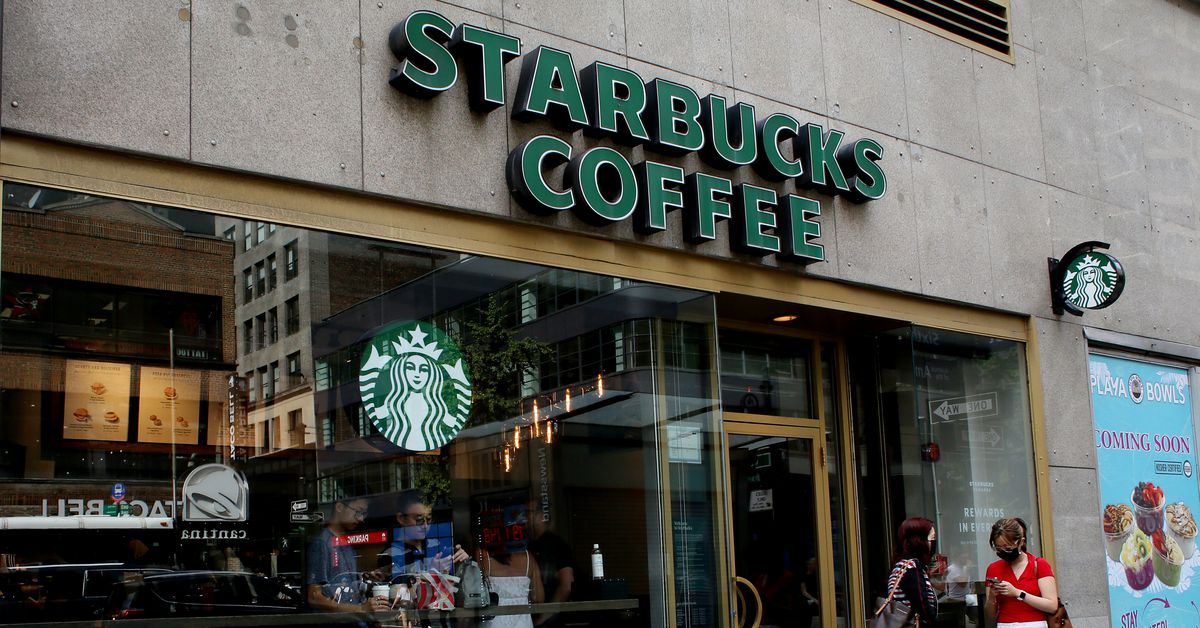
After years of trying to convince people that it was a welcoming “third place” for gathering or working remotely, Starbucks is “evolving” away from that experiment and is leaning hard into operating just like any other fast-food restaurant.
This week, a viral TikTok video filmed by a Starbucks barista alleged that the chain was getting rid of its power outlets, once touted as a way to attract work-from-home folks into its cafes, because unhoused people were using them to charge their devices. “We make decisions on store designs regularly based on the habits and needs of our customers at the local level,” Starbucks spokesperson Reggie Borges said. “That could be a change in furniture, covering up outlets, hours of operation, channels of operation, etc. Local leaders know the customer needs best and we empower them to make the right decisions to meet those needs.” The chain has opened multiple locations of its Starbucks Pickup concept, the latest in Philadelphia, that don’t offer any seating or public bathrooms, and plans to install drive-thru windows and machines intended to help baristas make drinks faster in 90 percent of all new locations. All of these changes add up to a less-welcoming, volume-obsessed Starbucks, one that is essentially just like any other fast-food restaurant.
Over the past 20 years, Starbucks has maintained a firm grip on American coffee culture. Even as third-wave, independent shops cropped up in cities and small towns, the chain continued to expand at a massive rate, dominating both cities and suburban neighborhoods and growing even faster than the world’s top fast-food chains, McDonald’s and Subway. As of 2018, Starbucks had more stores in the United States than McDonald’s, cementing its place as the country’s most ubiquitous fast-food chain.
Despite this explosive growth, though, the past couple of years have not exactly been great for the chain’s reputation as a progressive brand among American consumers. Starbucks has long touted its progressive bonafides — and comparably higher wages — in an effort to set itself apart from competitors like McDonald’s and Dunkin; it was one of the first American chains to offer a $15 minimum wage to baristas. But that once-gold-standard isn’t exactly the case anymore — the company now offers a lower average wage than Amazon. In the current climate, when support for unions is the highest it’s been since the 1960s, much of Starbucks’s corporate “wokeism” is stuck in a bygone era.
Today, the chain offers trans-inclusive health insurance and pays for college tuition for some of its workers. But since the COVID-19 pandemic began, Starbucks workers started fighting back against what they viewed as bad working conditions and stagnant wages by organizing unions en masse. In response, Starbucks has acted like any other massive, business-as-usual chain: It’s refused to bargain fairly with unionizing workers at hundreds of stores across the country. Workers at one Oklahoma City store have filed an NLRB complaint alleging they’ve been threatened with the loss of trans-inclusive healthcare benefits; the chain has refused to offer wage increases at unionized stores; and fired union organizers over petty rule infractions. Borges told Eater that “claims of union busting are categorically false.”
The National Labor Relations Board has sanctioned Starbucks on numerous occasions for this behavior, but the chain has not yet indicated that it will take anything other than a completely oppositional position on the union. That’s a position that’s wildly unpopular with Starbucks’s customer base — according to a study conducted by More Perfect Union, 69 percent of Starbucks customers support the unionization effort.
Much of Starbucks’s popularity with “middle America” is rooted in its sleek, West Coast vibe. It’s fancier and more upscale than buying a cup of coffee at McDonald’s or the bodega down the street, and trendy drinks like the Frappuccino and “pink drink” quickly emerged as a signifier of cultural cachet for high schoolers everywhere. For a time, Starbucks customers could feel assured that they were patronizing a good business, one that called its employees “partners” in a nod to the spirit of community. “We call our employees partners because we are all partners in shared success,” the brand boasts. “We make sure everything we do is through the lens of humanity.” But now that consumers are aware of the union-busting and pure, profit-driven capitalism that lies beneath the surface, Starbucks no longer feels even remotely like the progressive, edgy choice.
To be clear, probably even before it made its way out of Seattle, Starbucks was never progressive or edgy. It was always an endeavor to make massive amounts of money, a fact that plenty of us were able to overlook as long as Starbucks made us feel cool among our friends — and offered us a place to work while drinking coffee. But if that’s no longer the case, why would anyone still be willing to pay a substantial premium for a very average macchiato at a place that treats its workers terribly?
Updated, September 22, 12:23 p.m.: This piece has been updated to reflect the fact that the Starbucks Pickup store is not a new concept, and that the allegations regarding the loss of trans-inclusive health care benefits stem from a complaint filed to the NLRB.
Updated, September 23, 7:39 a.m. with comment from a Starbucks spokesperson.
"now" - Google News
September 22, 2022 at 02:03AM
https://ift.tt/4a81VLs
Starbucks’s New Cafes and Drive-Thrus Are a Pivot From Its ‘Third Place’ Coffeeshop Origins - Eater
"now" - Google News
https://ift.tt/kW7C8eu
Bagikan Berita Ini














0 Response to "Starbucks’s New Cafes and Drive-Thrus Are a Pivot From Its ‘Third Place’ Coffeeshop Origins - Eater"
Post a Comment